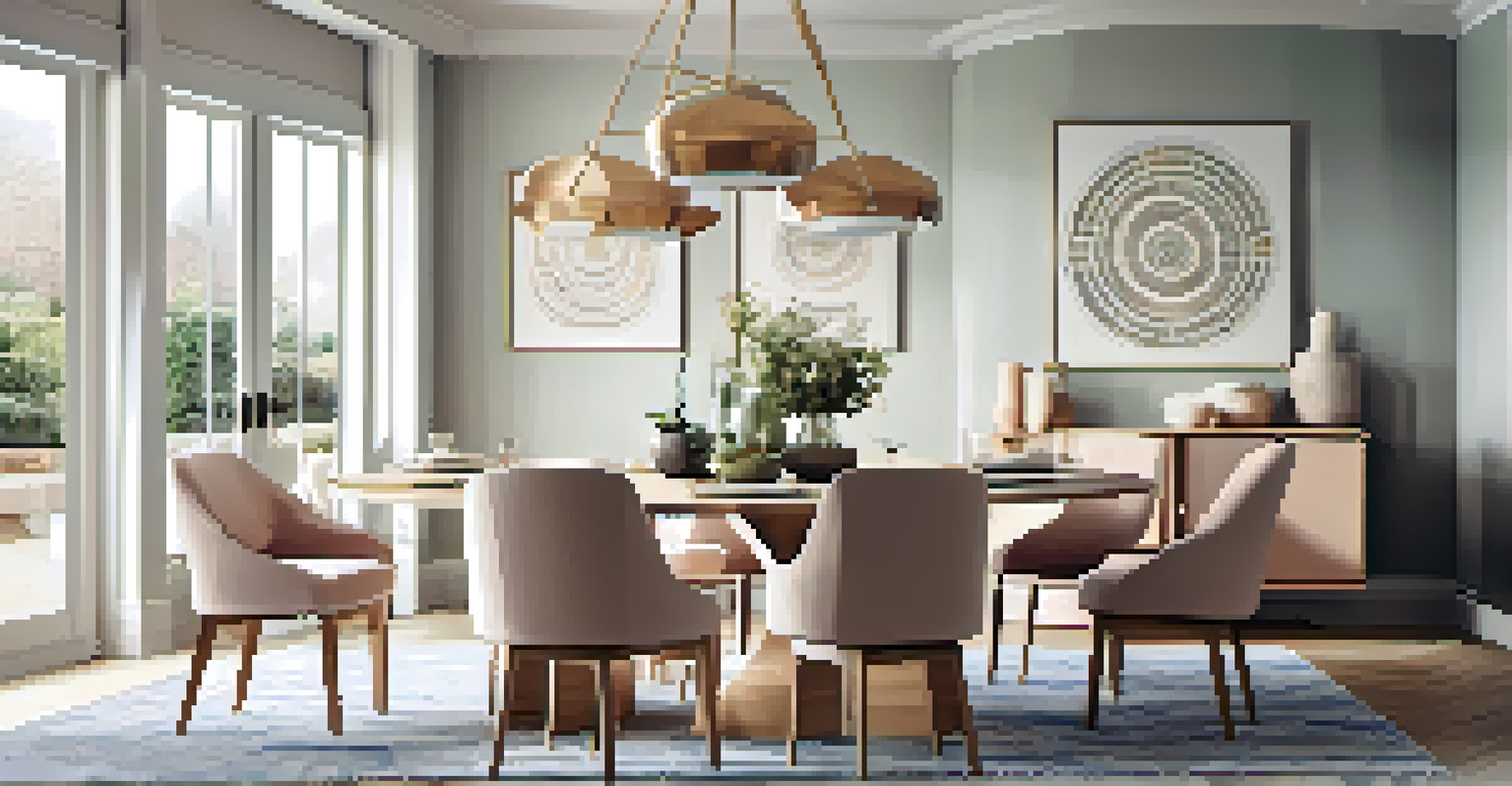Staging Small Spaces: Techniques to Make Rooms Feel Larger

Understanding the Importance of Space Perception
When it comes to small spaces, perception is everything. The way a room is staged can drastically impact how spacious it feels. By understanding the principles of space perception, you can create an environment that feels open and inviting.
The best rooms have something to say about the people who live in them.
For instance, light colors tend to reflect more light, which can make a room appear larger. Walls painted in soft pastels or whites can create a sense of airiness. Similarly, using mirrors strategically can help bounce light around the room, enhancing that spacious feel.
It's about creating an illusion of depth and openness. The more you can manipulate the visual elements, the more you can make a small room feel like a cozy yet expansive retreat.
Choosing the Right Furniture for Small Areas
Selecting furniture for small spaces requires a keen eye for scale and functionality. Opt for pieces that are proportionate to the size of the room; oversized furniture can quickly overwhelm a small area. Instead, look for sleek, multi-functional furniture that serves more than one purpose.

For example, a coffee table with storage underneath can help keep clutter at bay while still providing a surface for drinks or books. Likewise, choosing a sofa with a low profile can create a more open line of sight, making the room feel more spacious.
Optimize Space with Smart Design
Utilizing light colors, mirrors, and multi-functional furniture can enhance the perception of spaciousness in small areas.
Remember, less is often more in small spaces. By carefully curating your furniture choices, you can maintain a clean aesthetic that feels inviting rather than cramped.
Incorporating Smart Storage Solutions
Storage can be a challenge in small spaces, but with creative solutions, it can also enhance the room's functionality. Look for furniture that incorporates hidden storage, like ottomans or beds with drawers underneath. These pieces can help you keep items out of sight while maximizing floor space.
Simplicity is the ultimate sophistication.
Additionally, consider vertical storage options. Wall shelves and tall bookcases draw the eye upward, creating an illusion of height and making the room feel larger. They also provide a perfect opportunity to display decor, keeping surfaces clear and tidy.
Ultimately, smart storage solutions not only keep your space organized but also contribute to a more open and airy feel.
Utilizing Light and Color to Expand Perception
The right color scheme can do wonders for small spaces. Lighter shades tend to open up a room, while darker colors can create a cozy feel but may also make it feel smaller. If you love darker hues, consider using them as accents rather than on all walls.
In addition to color, lighting plays a crucial role. Natural light is your best friend, so keep window treatments light and airy to allow as much sunlight in as possible. For artificial lighting, use a mix of ambient, task, and accent lighting to create layers that enhance the room's dimensions.
Embrace Vertical Storage Solutions
Incorporating tall furniture and wall-mounted decor can maximize vertical space, making a room feel larger and more dynamic.
By combining thoughtful color choices with effective lighting, you can create a small space that feels vibrant and expansive.
Creating a Cohesive Design Theme
A cohesive design theme can help unify a small space, making it feel more intentional and less cluttered. Stick to a limited color palette and similar materials throughout to create a sense of harmony. This fluidity can trick the eye into perceiving a larger area.
Incorporating a recurring pattern or texture can also help tie the room together. For example, if you choose to have a geometric pattern in your throw pillows, incorporate it subtly in your rug or artwork as well.
When everything in the room tells a part of the same story, it can help reduce visual chaos and foster a sense of spaciousness.
Maximizing Vertical Space in Your Home
When space is limited horizontally, think vertically! Utilizing wall space effectively can significantly enhance the functionality of a small room. Tall bookshelves, hanging plants, or wall-mounted decor can draw the eye upward and create a sense of height.
Consider using tall furniture pieces such as bookshelves or cabinets that draw the eye up rather than out. This approach can help balance the room and make it feel less confined.
Minimalism Creates Open Environments
Adopting a minimalist approach helps reduce clutter, allowing for a more serene and spacious atmosphere in small spaces.
Additionally, hanging artwork or placing mirrors higher on the walls can also contribute to the illusion of a taller space. By maximizing vertical space, you can create a more dynamic and open environment.
Employing Minimalism for a Spacious Look
Embracing minimalism can be particularly effective in small spaces. By reducing clutter and keeping only essential items, you allow the eye to move freely around the room. This can create an illusion of more space and a more serene atmosphere.
Consider adopting a 'one in, one out' rule for decor items. This practice encourages you to keep only what you truly love and use, which can prevent overcrowding. Minimalist decor often emphasizes functionality, making every piece count.

Ultimately, a minimalist approach can help you achieve a clean, spacious look that feels intentional and thoughtfully curated.